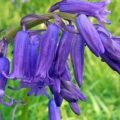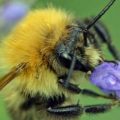Harebell Campanula rotundifolia
Table of Contents
Despite its delicate appearance, harebell is surprisingly tough and resilient, able to withstand windswept cliff tops and hillsides. It will grow in both acid and alkaline soils and thrives in either shaded or sunny sites.

Plant family: Campanulaceae
Aliases: Scottish bluebell, small bluebell, thimbles, wind bells
Flowering period: July – October
Flower colour: Blue
Preferred soil type: Dry, free draining
Habitat: Grassland, cliff tops, hill sides, heathland
Status: Common
General information
An attractive creeping, herbaceous perennial wildflower in the bellflower family. It’s similar in appearance to the bluebell and is actually named as such in Scotland. It thrives in nutrient deficient, dry soils and is most commonly found in grassland, heathland and cliff slopes & tops.
This relatively low-growing plant reaches heights of between of 15 – 50cm. It will tolerate full sun partial and full shade and spreads via underground runners known as rhizomes. It takes its name from olden days when people believed that witches used the juices from the flowers to transform themselves into hares.
Identification

Flowers: The drooping, bell shaped, blue flowers (on rare occasions white or pink) bloom from July to October, they’re borne on slender stems, in loose, branched inflorescences. Each flower measures between 12 – 30mm in length, they usually have 5 petals (sometimes 4,6 or 7) with curled, outward pointed tips.
Leaves: The basal leaves are round to heart shaped at the base and toothed, up to 15mm long, they are short lived and disappear prior to the plant booming. The stem leaves are short stalked, upper leaves are stalk less, elongated and linear (almost grass like).
Value for wildlife
Harebell is a nectar producing plant and is visited by both bumble bees and honey bees.
Uses for harebell
The leaves are edible and can consumed raw or cooked and can be used in salads. The stems exude a milky sap which as been used to treat depression. Other treatments include ear ache, sore eyes and heart complaints.
Harebell images
Click to enlarge

This work is licensed under a Creative Commons Attribution 4.0 International License.
You are free to use, share and adapt any of the images on this page, under the condition we receive a followed backlink to our website https://diversegardens.co.uk as the image source.


















